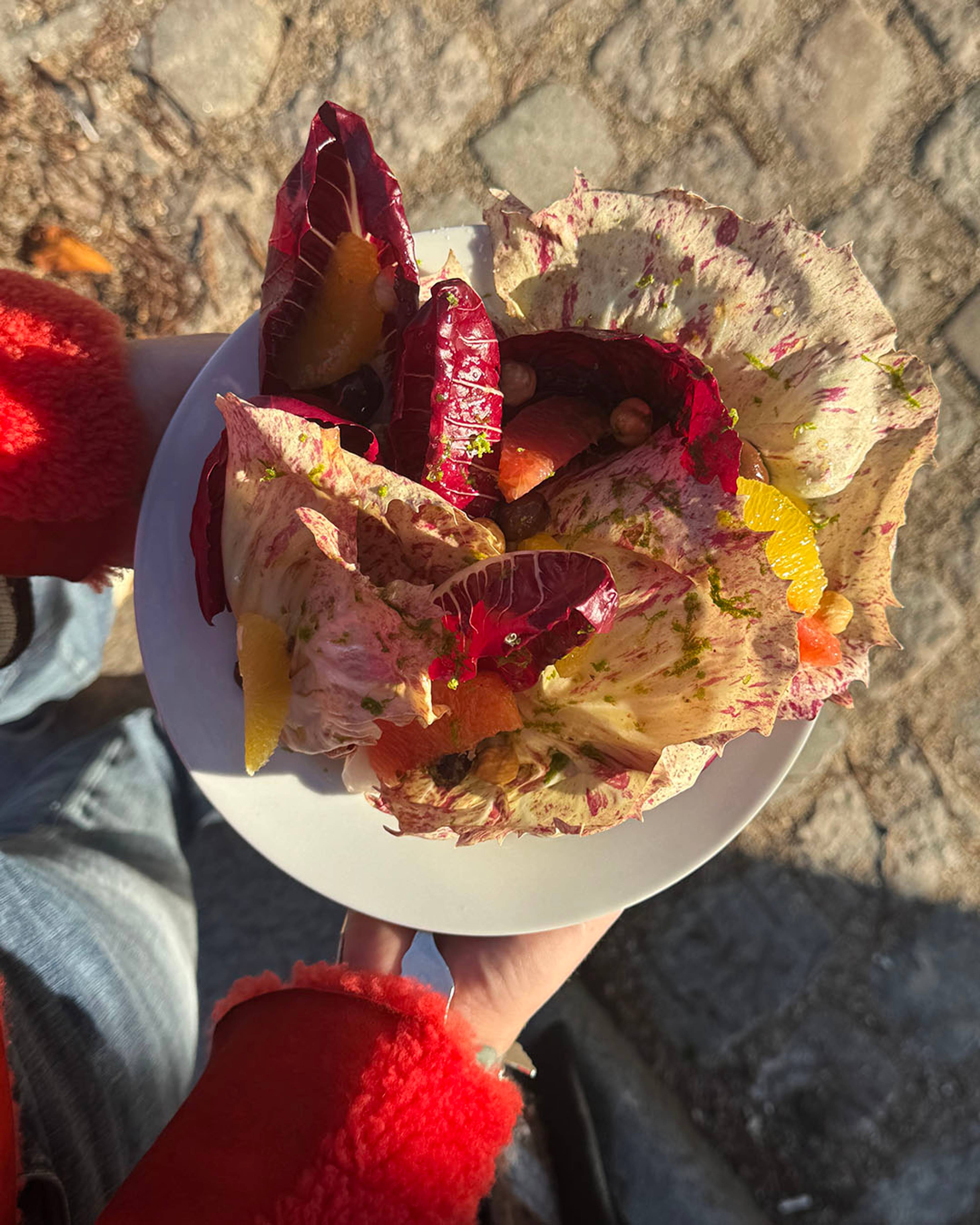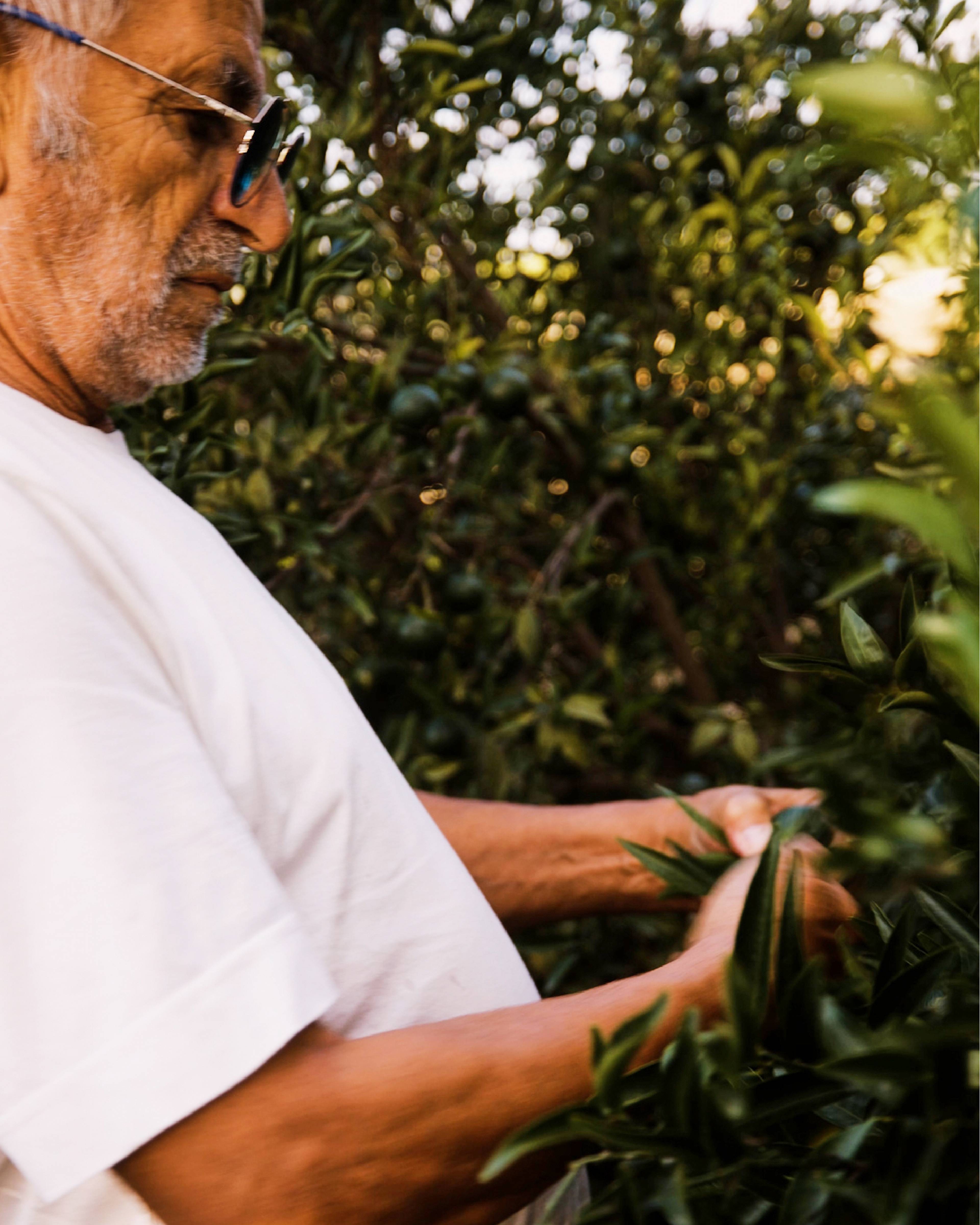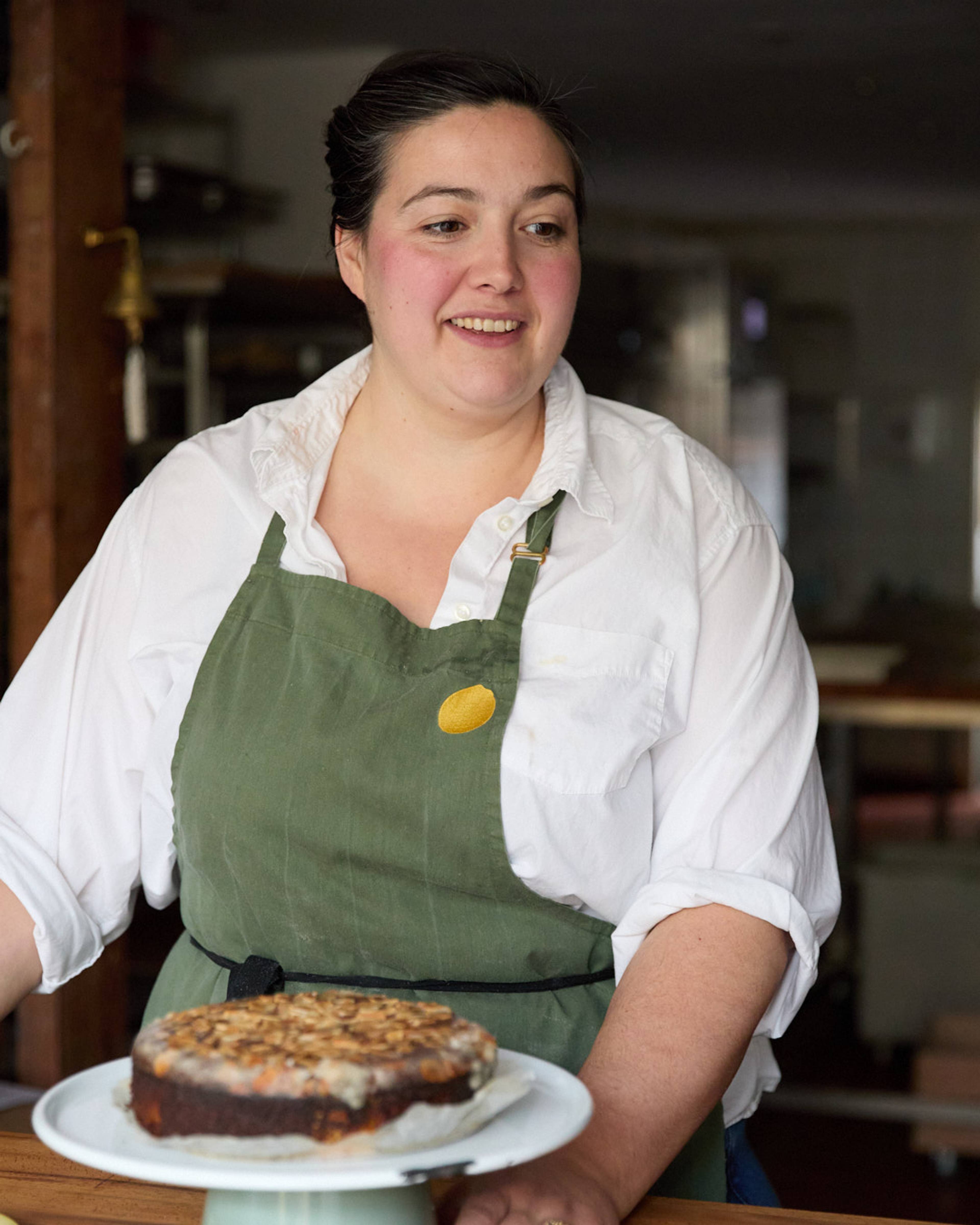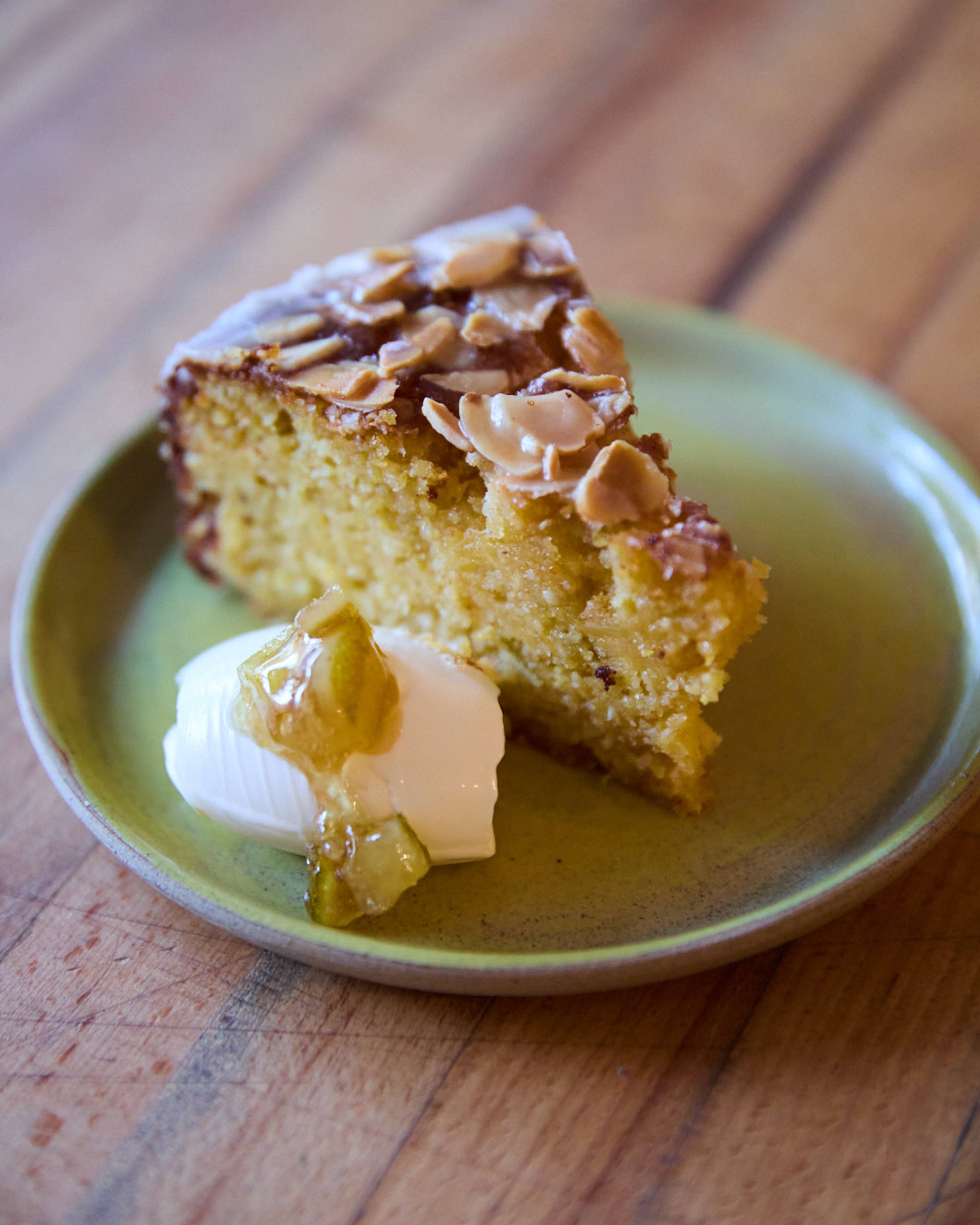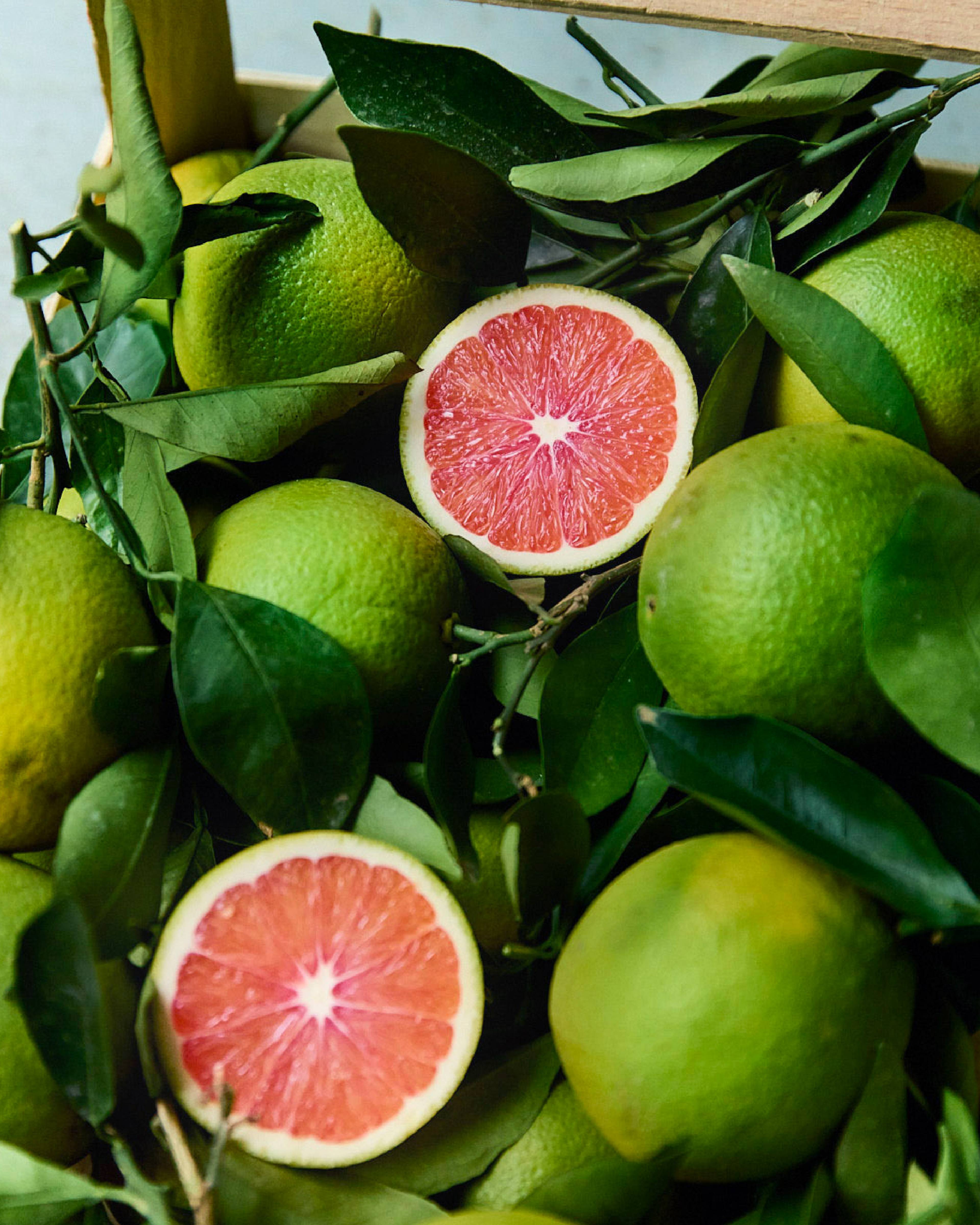How Foraging Brings Us Back to Our Roots
Guy, Cornwall

Garlic Flowers, Cornwall
Foraging is the art of finding and gathering food in the wild. It’s a well-loved pursuit among chefs and food enthusiasts, who use wild plants to bring depth and distinctive, seasonal flavour to their dishes.
In recent years, foraging has experienced a remarkable rise in interest – a growing movement that encourages people to reconnect with nature and the seasons. Though it’s currently gaining significant traction, the roots of this practice trace back millennia. For our distant ancestors, this age-old practice would simply have been a way of life – or rather, a necessity.
Interestingly, research even shows us that humans have a unique ability to distinguish reds and greens more effectively than many other mammals, a trait that has evolved over millions of years. This enhanced colour vision is believed to be fine-tuned to help us judge the ripeness of fruits and vegetables, an essential skill for foraging.
In today’s society, where many are desperately disconnected from the origins of their food and the people who grow it, foraging offers a way to reconnect with nature. A route back to the source.
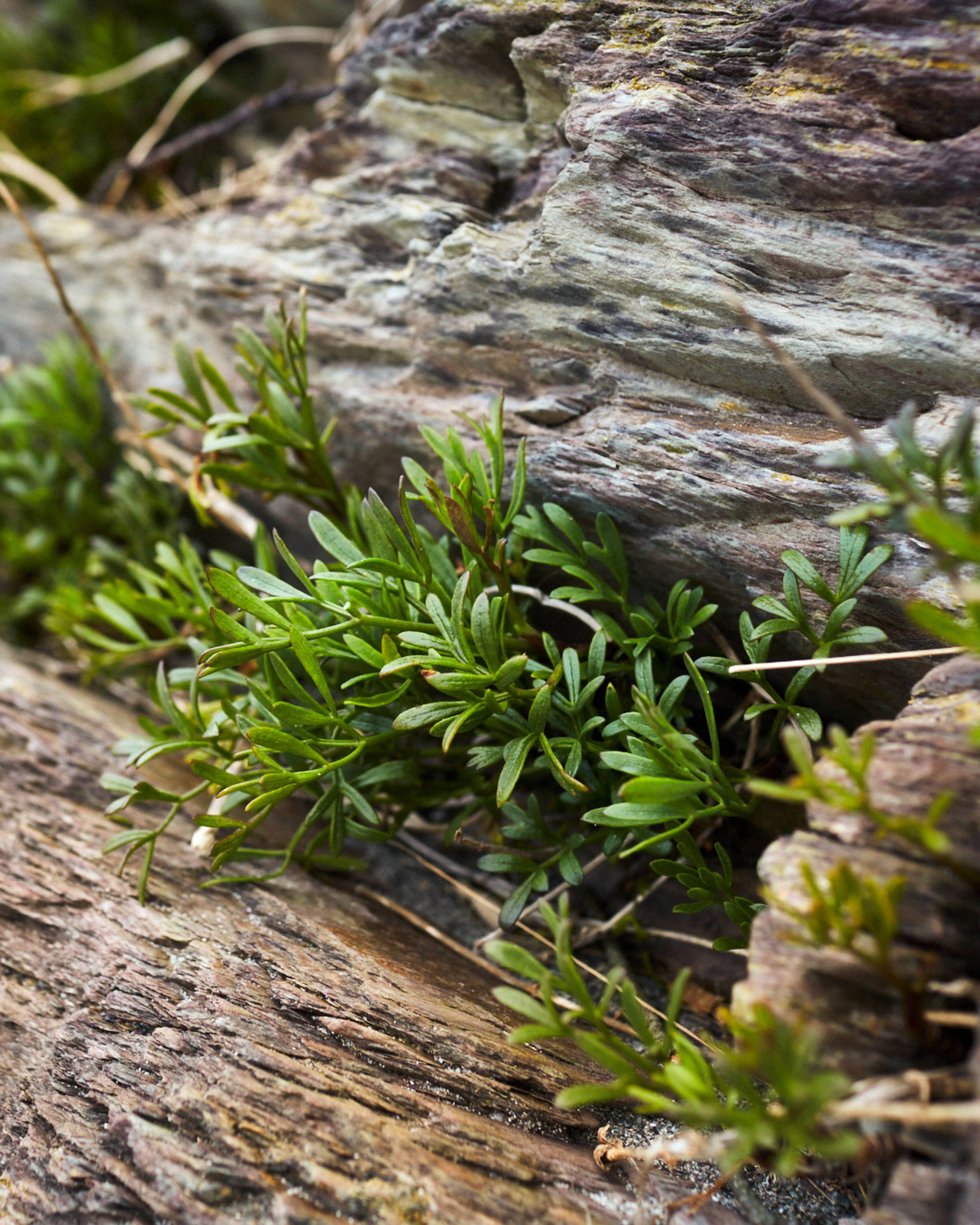
Rock Samphire, Wales
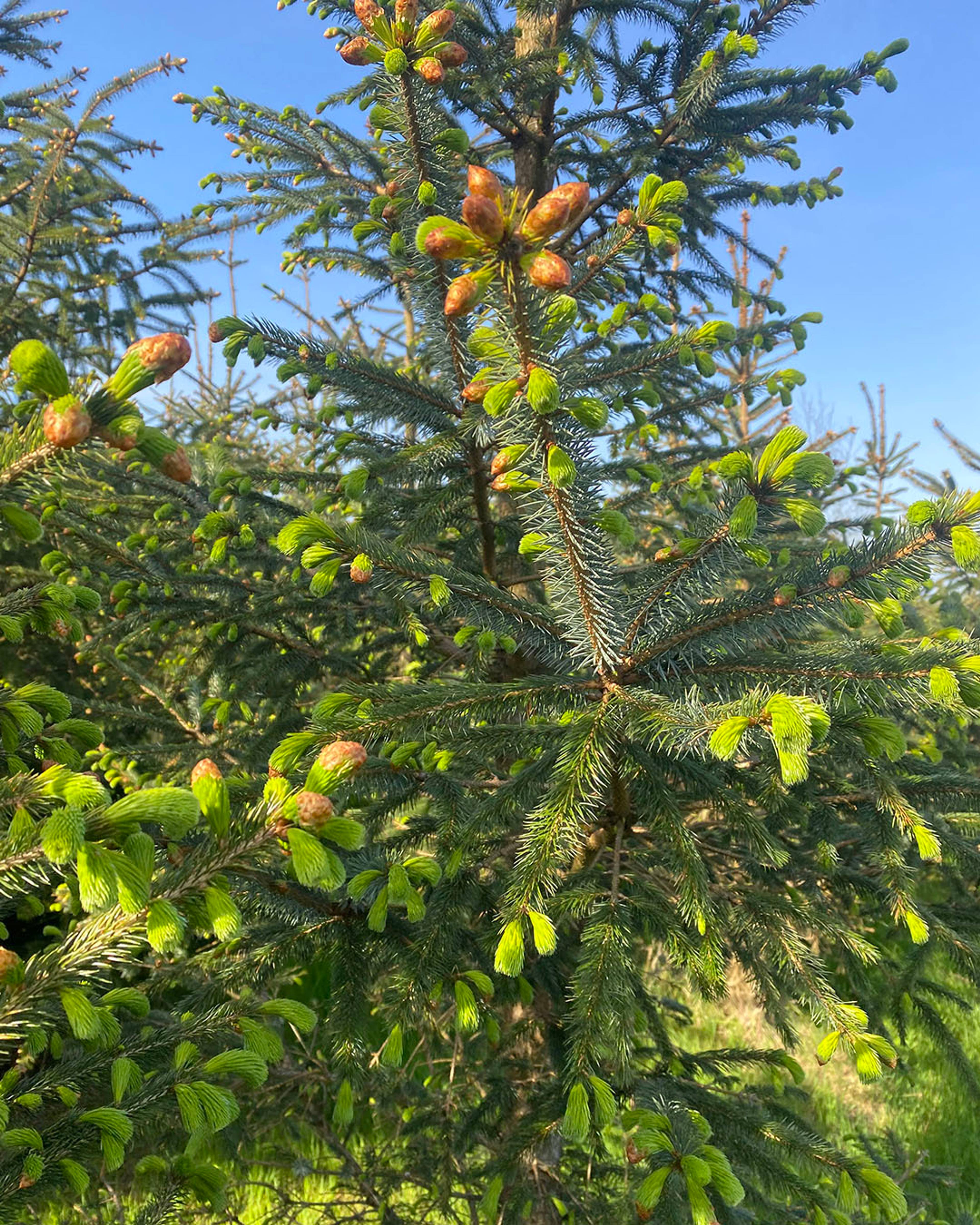
Spruce Tips, Scotland
SHIFTING SEASONS
Our UK sourcing team works directly with foragers from Wales to the highlands of Scotland to bring wild foods to you.
Many have rare profiles that are uniquely tied to their natural growing environments. Take Salty Fingers – succulent leaves full of tangy, saline juice – or Rock Samphire which harbours an intense carrot-like flavour with some herbal bitterness. Our wild products are often limited in supply and this is because the start – and end – of their seasons can be unpredictable.
Indeed, for the forager, the changing seasons are paramount to their practice.
In spring, woods and hedgerows come alive with edible greens like Alexander Buds, while Sea Purslane and Sea Beet flourish in sandy soil along the coast. In forests, foragers carefully gather Green Pine Cones and Spruce Tips.
Come summer, British landscapes are dotted with the bright colours of Meadowsweet and Damsons, while fragrant, creamy-white Elderflower blankets everything from roadside shrubs to forest edges.
Autumn ushers in an abundance of mushroom varieties including Scottish Girolles and Chicken of the Woods. It’s also a prime time for hedgerow fruits such as Rose Hips, Elderberries and Sloes, among many others. Meanwhile, winter opens up a new landscape of possibilities, with an array of nuts ready to be discovered.

A variety of Wild Mushrooms foraged in Pitagowan, Scotland
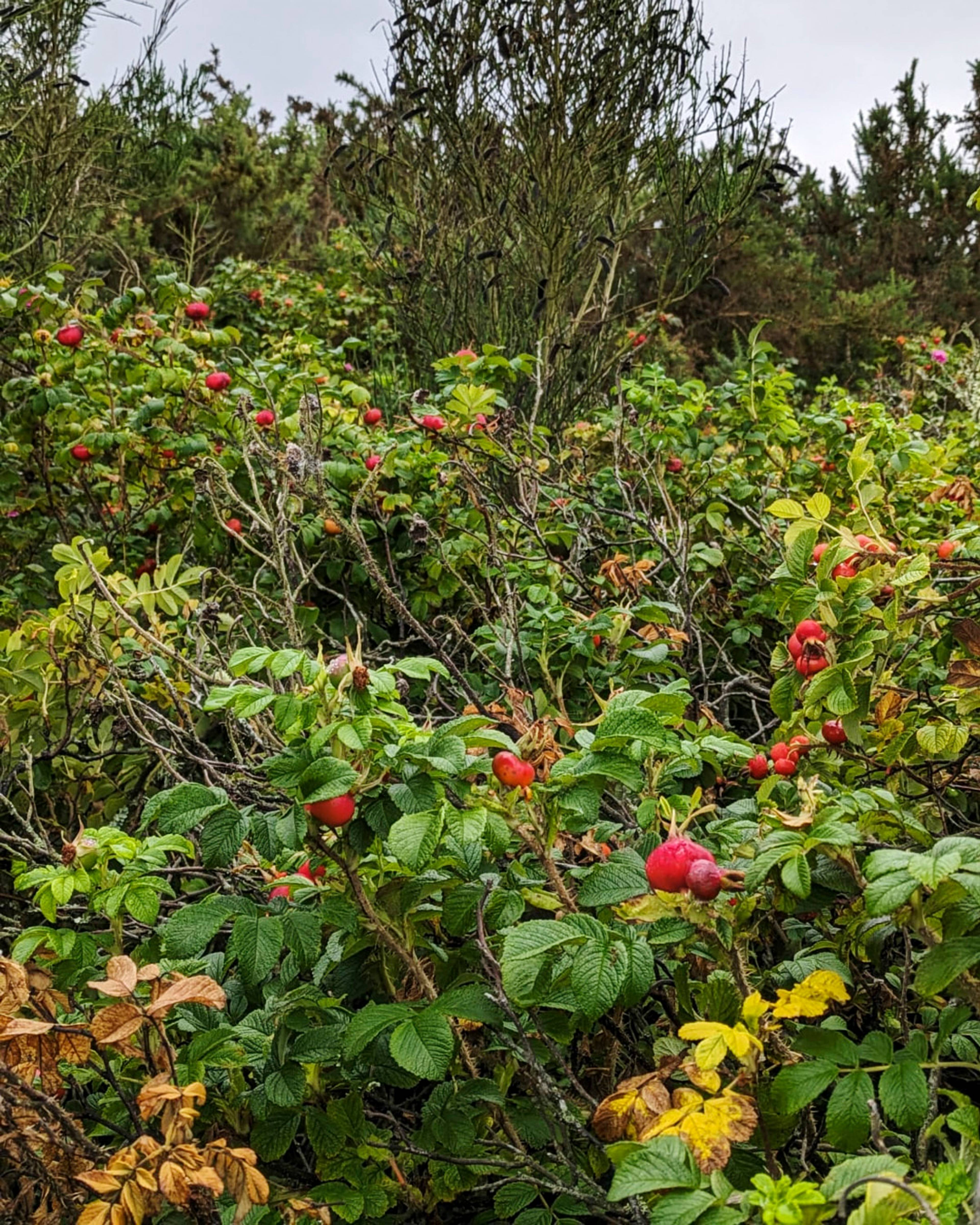
Rosehips, Cornwall
wild garlic
Wild Garlic is one of the defining foraged plants of this time of year, thriving in shaded woodlands with its vibrant green leaves and distinctive aroma. We follow it through its entire life cycle – from Leaves and Buds to Flowers and Capers (with the exception of Bulbs) – working closely with foragers like Guy in Cornwall to bring this wild plant to you.
Sourcing wild food and supporting the foragers who hold valuable knowledge is an important part of challenging an industrialised food system that favours all-year-round availability, homogenised flavours and dependable yields. These resilient plants offer up valuable sources of nutrient-dense food while restoring our connection to nature through the truest example of seasonality.
Guy spends hours selectively cutting Wild Garlic from the forest floor, before meticulously sorting through his stock, removing any foreign leaves. This is labour-intensive work, demanding expert knowledge and a respect for the plant’s natural environment. Proper harvesting methods encourage regrowth, while overpicking can have the opposite effect. Each patch should be left for three or four years to regenerate.
Guy, Cornwall

Guy explains how Lords and Ladies (Arum maculatum) can be mistaken for young Wild Garlic due to their similar leaves and shared habitat. Knowing the difference is crucial – that’s why we work with experts like Guy.
our foragers
This duty of care is shared by all the foragers we work with. They prioritise preserving biodiversity and protecting the environment, ensuring that foraging never comes at the cost of depleting natural resources.
With this in mind, our foragers only collect from plentiful populations – leaving ample resources for wildlife and allowing plants and fungi to regenerate.
They understand that all plants are protected under the Wildlife and Countryside Act (1981) which makes it illegal to uproot any wild plant without a landowner's permission. Additionally, certain rare or vulnerable species are further protected, prohibiting picking or uprooting.
By adhering to these regulations, our foragers ensure that their practices contribute to the conservation of natural habitats and the sustainability of wild plant populations.
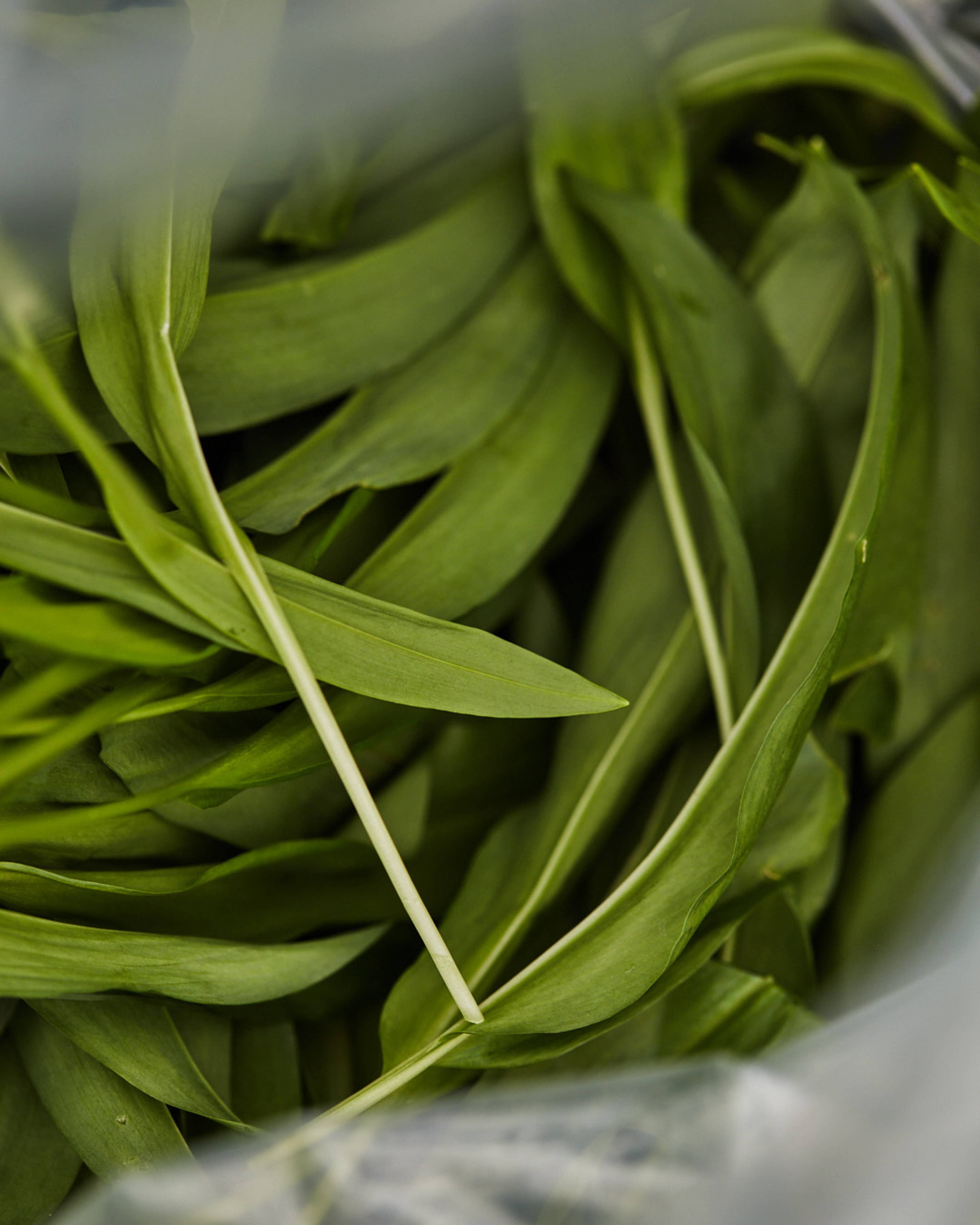
Garlic Leaves, Cornwall
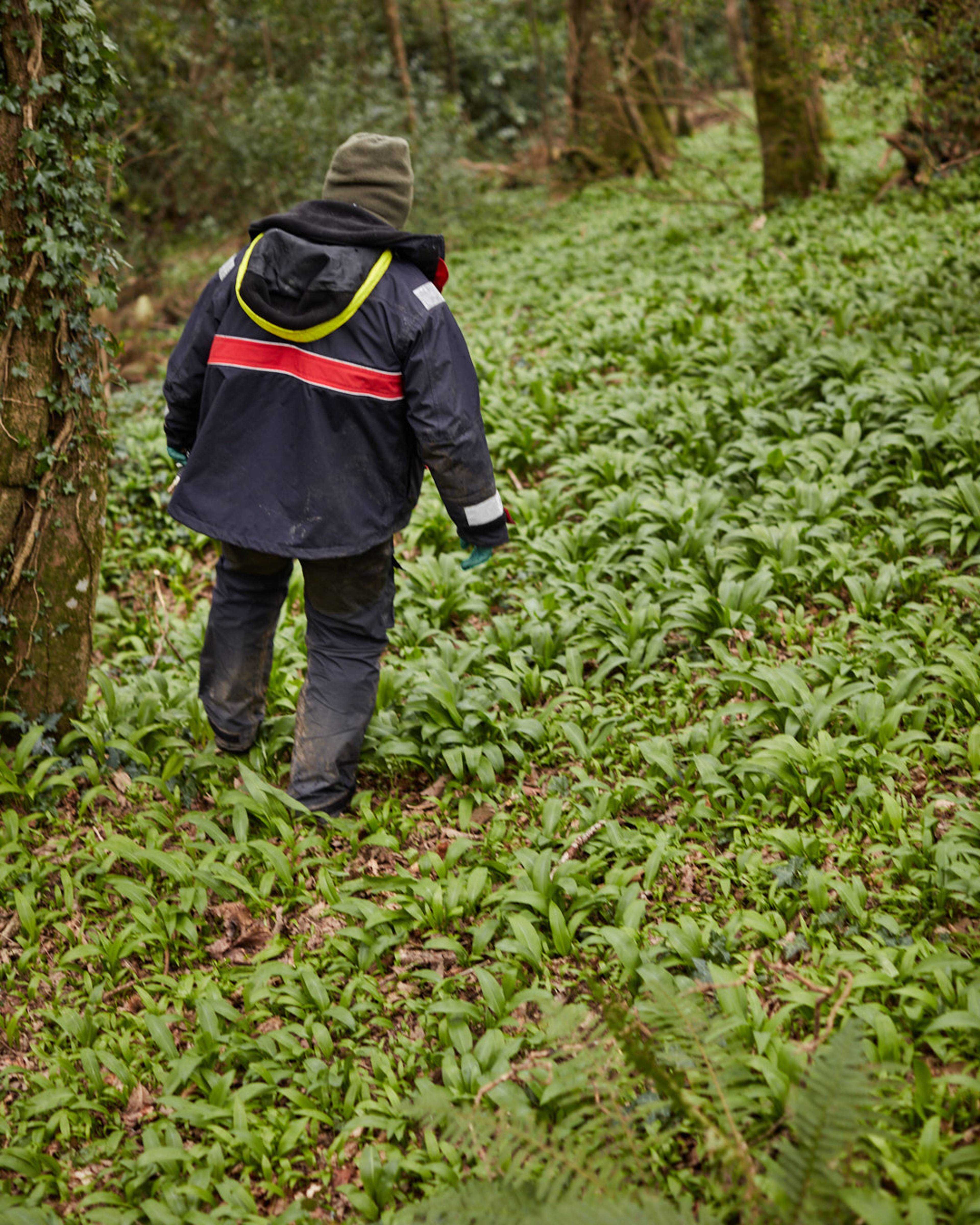
Guy, Cornwall
BRANCHING OUT
Imagine strolling through your local park or walking through city streets, not just to get somewhere, but as a chance to discover edible treasures hidden along the way. Though generally associated with the countryside, more and more city dwellers are turning to foraging as a way to reconnect with nature in the midst of busy urban landscapes – a practice that grows an awareness of surroundings and extends an opportunity to not only get out in nature but to pick, smell and taste it.
“Urban foraging is an intimate study and interaction with the living world around us,” writes London-based forager and author, Wross Lawrence in National Geographic.
Wross is part of a growing community of professional urban foragers in the UK, some of whom offer guided neighborhood walks. These walks teach participants how to safely identify wild plants, deepen their knowledge of their uses, and explore ethical foraging practices.
HUNGRY FOR MORE?
If you’d like to venture out and have a go at foraging in your own local area, we’d recommend joining a guided walk with an expert. Check out these important guidelines by Woodland Trust and Food Standards Agency on foraging sustainably and responsibly to help you stay safe and within the law.
You can also head to the Wild & Foraged section of our app to stay up to date with our latest produce.
Further reading and resources:
- Foraging: What to look out for each month, Woodland Trust
- The Forager's Calendar: A Seasonal Guide to Nature’s Wild Harvests, John Wright
- Identifying edible and poisonous wild plants, Wild Food UK
- How urban foraging became became the new way to explore a city, National Geographic
Stories
See allWe exist to fix the food system.
People are more cut off from the origins of their food than ever. This makes flavour, nutrition and farming practices that protect the planet, almost impossible to find.
By working directly with growers, we create a more sustainable way forward for farming. By giving everyone the tools to understand the power of our food choices, we empower everybody to become drivers of change.
Now is the time for action. Join the food system revolution.

Go beyond four seasons
Each fruit and vegetable has its own season, with subtle shifts which happen every day. Follow their microseasons to unlock flavour at every stage.
WHAT’S IN SEASON?

Know where your food comes from
We know the name of the people behind everything we source. Recognise their growing artistry to find out exactly where your food comes from (and why that matters).
MEET THE GROWERS

Make your diet diverse
Our growers work with varieties chosen for quality and nutrition, not yield. By selecting their crops you keep heritage seeds in play, add to ecosystem biodiversity and preserve unique flavours.
PEAK SEASON BOX
United Kingdom
© 2025 Natoora Ltd.
